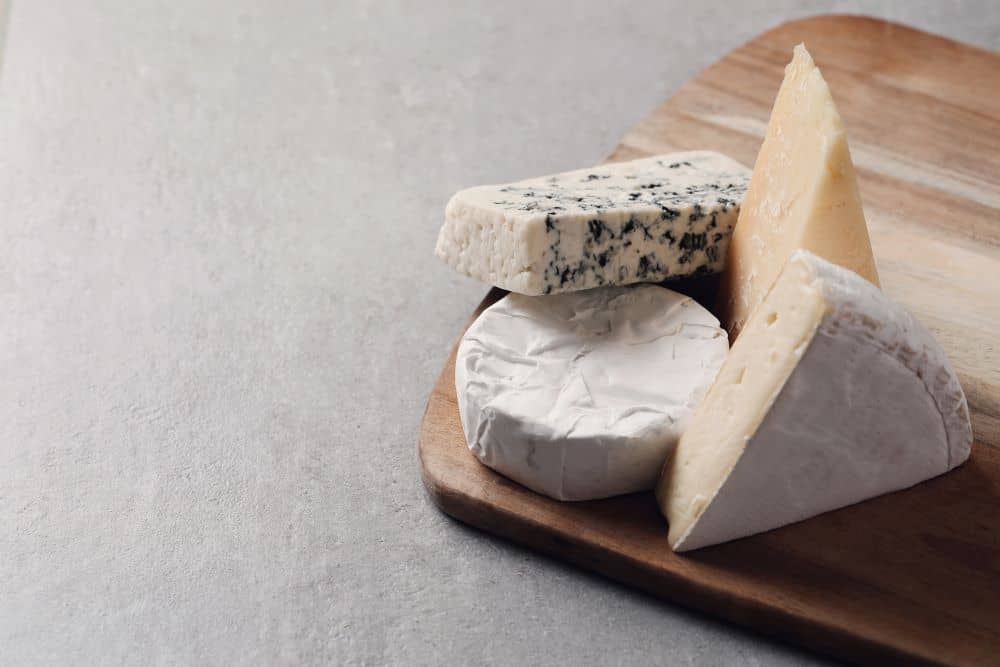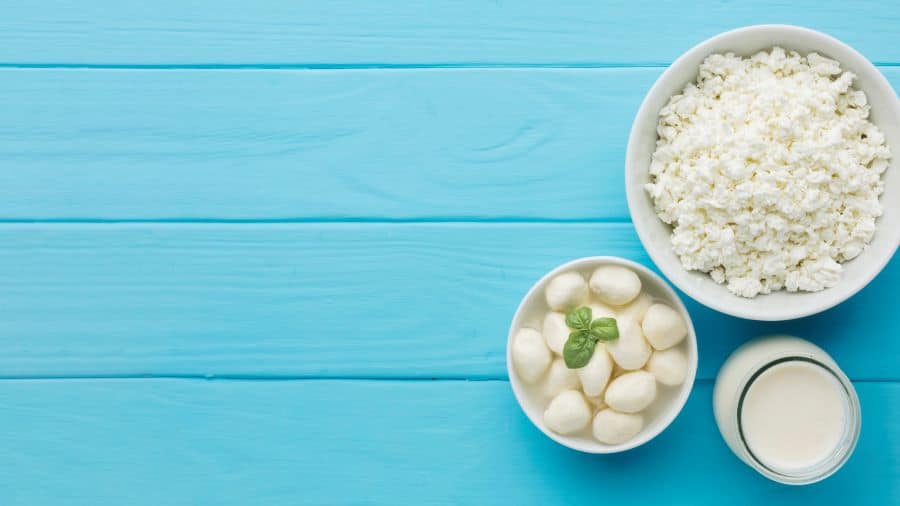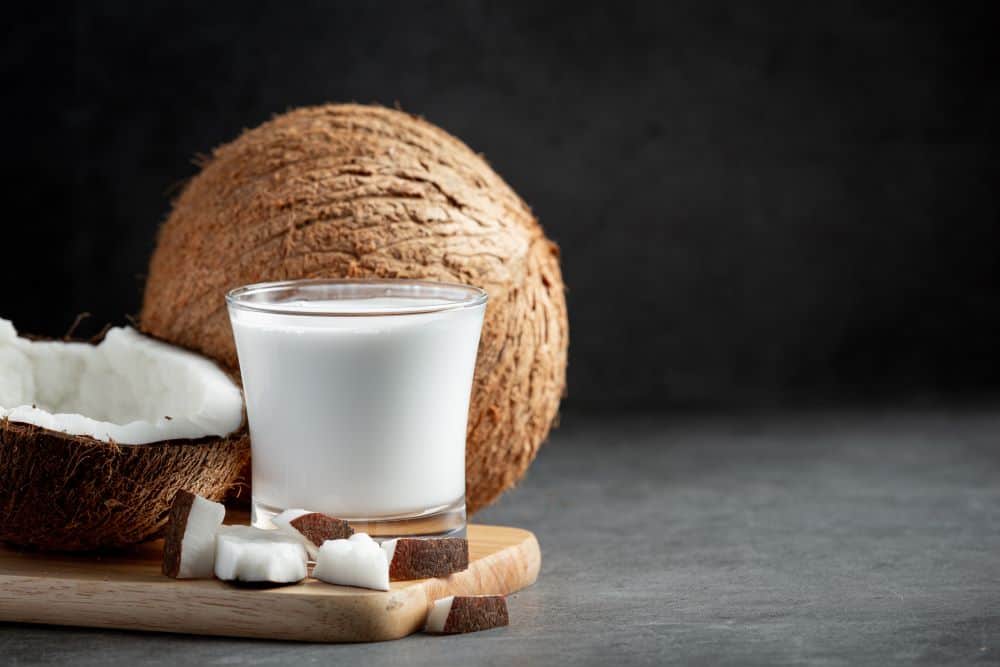Is dairy high in histamine?Are there low-histamine dairy foods?
Milk and other dairy foods are tricky, whether you have histamine intolerance or not. Many adults suffer from lactose intolerance and can’t digest lactose, one of the sugars in milk.
When people with lactose intolerance consume dairy, they can’t break down lactose, but gut bacteria can, and they produce gases.
Unfortunately, when those gases build up in the gut, it triggers bloating, nausea, and crampy tummy pain when they consume dairy products.
Lactose intolerance makes life unpleasant for many dairy lovers, but what if you don’t have lactose intolerance but histamine intolerance? You might wonder what dairy foods are low in histamine and won’t worsen your symptoms.
Do dairy products belong in your fridge if you have histamine intolerance or sensitivity?

Milk and Histamine Intolerance
Are there low-histamine dairy foods? If you have histamine intolerance, you may handle modest quantities of some dairy foods. Whether dairy causes problems depends on your level of diamine oxidase, one of the enzymes that break down histamine, and the dairy product.
The type of dairy matters. Even if you have histamine sensitivity, you should tolerate fresh, pasteurized milk, and it’s best to enjoy while it’s at its freshest. Don’t let it sit in the fridge.
The fresher, the better when you’re trying to avoid histamine intolerance symptoms.
Fresh, pasteurized milk is quite low in histamine. According to the book Histamine Intolerance: Histamine and Seasickness, pasteurized milk contains between 0.3 and 0.7 mg/kg. of histamine while condensed milk contains around 1.2 mg/kg. In contrast, some cheese contains as much as 1200 mg/kg.
Raw and Fermented Milk is More of a Problem
Raw or unpasteurized milk is another story. Raw milk and fermented milk contain enough histamine to trigger symptoms for many people with histamine intolerance. This includes kefir. However, there was an interesting study that looked at the effects of kefir on histamine levels in animals.
The study showed that giving small to moderate doses of kefiran, a carbohydrate in kefir to animals, didn’t increase the amount of histamine in their blood, although large amounts did.
Kefiran seems to stabilize mast cells, so they didn’t realize histamine and other inflammatory compounds into the bloodstream. (6)
It’s interesting, but there’s not enough evidence in humans that kefir doesn’t increase the body’s histamine burden yet, so it’s best to avoid it.
Research shows histamine can build up in dairy foods from the breakdown of lactic acid bacteria. (1) Any type of fermented dairy products, including kefir, yogurt, buttermilk, and sour cream, may contain varying quantities of histamine, but far less than hard cheese, since cheese takes several weeks to ripen.

Can Yogurt Be Part of a Low-Histamine Diet?
Tolerance to histamine foods vary from person to person with histamine intolerance, but most fermented dairy foods can pose risks. There are some exceptions. For example, some people with histamine sensitivity can tolerate yogurt in moderation.
Introducing small quantities of yogurt into your diet and tracking symptoms in your food journal will help you determine whether you can tolerate small yogurt in modest quantities. Since manufacturers use bacteria to ferment yogurt, the starter culture bacteria can increase the histamine content of yogurt.
Two of the most common bacterial strains manufacturers use to make yogurt are Lactobacillus bulgaricus and lactobacillus casei. A study found that these bacteria increase histamine. (2) All dairy yogurt uses these strains, including Greek yogurt.
If You Eat Yogurt, Monitor for Histamine Intolerance Symptoms
The amount of histamine in yogurt may still be low enough not to trigger symptoms if you’re careful how much you eat. According to Histamine Intolerance: Histamine and Seasickness, yogurt contains around 2.1 mg/kg. of histamine, more than the quantity in pasteurized milk, but far less than most cheeses. (3)
What about non-dairy yogurt alternatives made from coconut milk, almond milk, oat milk, or soy milk? Unfortunately, even non-dairy yogurt is made with strains of Lactobacillus, so yogurt, especially in larger quantities, may worsen histamine intolerance symptoms. If you love yogurt, try small amounts and monitor your symptoms closely.

Is All Cheese High Histamine?
If you’re a cheese lover, you might wonder whether you can include ANY cheese in your diet, and if some types are safer than others. The amount of histamine in cheese varies with how the cheese is made, stored, and the type of cheese.
Raw milk contains natural bacteria that increase the histamine content of the product, so cheese made from unpasteurized milk will also be high in histamine. Another type of cheese to avoid is hard cheese since it takes more time to ripen.
Examples of hard cheese usually high in histamine include:
- Asiago Hard Cheese
- Emmental Cheese
- Gruyere Cheese
- Parmigiano-Reggiano Cheese
- Gorgonzola Cheese
- Manchego Cheese
- Gouda Cheese
- Pecorino Romano Cheese
- Cotija Cheese
Cheddar, Parmesan, and Alpine cheese also take a long time to ripen and accumulate more histamine. If you still want to add cheese to your diet in small quantities, choose semi-hard cheese that doesn’t take a long time to mature. Dutch-style cheese tends to have lower quantities of histamine and other biogenic amines.
It’s best to avoid all processed cheeses too, not only because of their processing, but also because manufacturers often use Emmental cheese to make processed cheese products, and it’s a high-histamine cheese. Find out more about whether cream cheese is low histamine and whether eggs are a low-histamine food.

Is There Any Cheese That Contains Little or No Histamine?
If you have histamine intolerance and enjoy cheese, you’re not without options. Cream cheese and cottage cheese contain little or no histamine and can be part of your diet. Gorgonzola and mozzarella are also low in histamine. These are your best choices if you don’t want to give up cheese.
Cottage cheese is one of the best options, since it’s low in histamine, but high in protein and calcium. A one-cup serving of small curd cottage cheese contains 25 grams of protein and 18% of the day’s recommended intake of calcium. (4) Another source of calcium is tofu.
Are Non-Dairy Milk Alternatives Low Histamine?
More people are choosing non-dairy milk alternatives these days. These include “milk” made from nuts and seeds. Some of the most popular are coconut milk, almond milk, rice milk, hemp milk, and oat milk. These non-dairy alternatives are low in histamine and are safe for most people with histamine sensitivity.
If you buy non-dairy milk, choose a brand that doesn’t contain carrageenan, derived from red seaweed. Manufacturers add it to thicken the product, improve its texture, and keep the ingredients from separating.
However, some studies in animals show it causes intestinal inflammation. Many non-dairy milk makers are phasing it out and placing it with guar gum or locus bean gum.
An advantage of no-dairy milk is it contains no lactose and won’t trigger lactose intolerance symptoms. One reason so many people turn to non-dairy milk is the high prevalence of lactose intolerance in adults.

Are There Low-Histamine Dairy Foods: The Bottom Line
Dairy isn’t completely off-limits if you have histamine intolerance, and everyone has varying levels of diamine oxidase, meaning you may tolerate more than someone else with histamine intolerance and vice versa, but there are some points to keep in mind when considering dairy. Here are some general guidelines summed up for you:
- Pasteurized milk and cream are low in histamine, but don’t store them long in the fridge. Use them quickly.
- Hard cheese is problematic since it can be very high in histamine because it takes a long time to ripen and mature.
- Low-histamine cheese options include cottage cheese, ricotta cheese, mozzarella cheese, Gorgonzola cheese.
- Yogurt is in the gray zone. It may contain enough histamine from the starter cultures that it worsens symptoms if you eat a lot of it. If you try it, start with a small amount and see how you tolerate it.
- Avoid all other fermented and raw dairy products, including kefir.
- Non-dairy milk alternatives, including coconut, almond, rice, hemp, and oat milk, are safe alternatives to dairy milk and have the added advantage of containing no lactose.
Another common question people often have, especially those who put dairy milk on their oatmeal is whether oatmeal is low in histamine.
References:
- Comprehensive Reviews in Food Science and Food Safety. Volume 20, Issue2. March 2021. Pages 1481-1523. https://onlinelibrary.wiley.com/doi/
- Institute of Food Science and Technology. Volume 46, Issue 10. October 2011. Pages 2062-2069.
- Histamine Intolerance: Histamine and Seasickness. Springer Publishing. 2015.
- U.S. Department of Agriculture. “Cheese, cottage, lowfat, 2% milkfat” https://fdc.nal.usda.gov/fdc-app.html#/food-details/328841/nutrients
- Front. Pediatr., 01 May 2017 | https://doi.org/10.3389/fped.2017.00096. https://www.frontiersin.org/articles/10.3389/fped.2017.00096/full
- Furuno T, Nakanishi M. Kefiran suppresses antigen-induced mast cell activation. Biol Pharm Bull. 2012;35(2):178-83. doi: 10.1248/bpb.35.178. PMID: 22293347. https://pubmed.ncbi.nlm.nih.gov/22293347/

